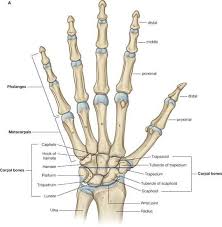Radial Tunnel Syndrome
 Increased pressure on the radial nerve, which runs around the bones and muscles of the forearm and elbow, causes a condition called radial tunnel syndrome. Patients typically feel pain along the top of the forearm but may also exhibit pain on the top of the hand and wrist.
Increased pressure on the radial nerve, which runs around the bones and muscles of the forearm and elbow, causes a condition called radial tunnel syndrome. Patients typically feel pain along the top of the forearm but may also exhibit pain on the top of the hand and wrist.
CAUSES OF RADIAL TUNNEL SYNDROME
A variety of issues may lead to radial tunnel syndrome. Radial tunnel syndrome occurs when the radial nerve gets pinched. The pinching often occurs at the elbow due to a narrow tunnel which things can obstruct, making it difficult for the nerve to fit through and therefore pinching. The radial nerve must travel around muscles and bands of tissue fibers and other structures within the human body.
- Injury to the arm
- Noncancerous fatty tumors (lipomas) which obstruct the radial nerve causing pinching
- Bone tumors which obstruct the radial nerve causing pinching
- Inflammation of surrounding tissue which makes tightens the radial tunnel and pinches the nerve
- Overuse of the arm due to sporting activities or work that involves repetitive pushing or pulling or grabbing
SYMPTOMS OF RADIAL TUNNEL SYNDROME
All individuals process pain differently which can lead to individuals reporting a variety of symptoms. Many individuals suffering from radial tunnel syndrome report cutting, piercing, or stabbing pain at the top of the forearm or back of the hand. This pain amplifies when attempting to straighten the wrist and fingers. In contrast to cubital tunnel syndrome and carpal tunnel syndrome, radial tunnel syndrome rarely causes numbness or tingling due to the radial nerve principally affecting the muscles.
Diagnosing Radial Tunnel Syndrome
Individuals experiencing wrist pain should seek the medical opinion from a hand and wrist specialist. To diagnose radial tunnel syndrome, the provider conducts a physical examination of the patient. The doctor asks about medical history, family history, and tries to get an idea of the every day life of the patient. The provider then performs physical tests of the hand and wrist. The doctor may order diagnostic testing to check for any underlying issues and rule out other possible ailments.
Treatment of Radial Tunnel Syndrome
To start the treatment for radial tunnel syndrome, the physician starts with conservative treatment. Conservative treatment includes things like RICE (rest, ice, compression, elevation), physical therapy, non-steroidal anti-inflammatory medications, and injections.
If the patients symptoms do not improve with conservative treatment and time, the doctor may suggest surgical intervention. An uncommon procedure, radial tunnel surgery has various outcomes according to surgeons. During  radial tunnel surgery, an anesthesiologist places the patient under general anesthesia. Under general anesthesia, the patient remains asleep for the duration of the surgery. The surgeon then performs a radial tunnel release which involves dividing the compressive sites in the radial tunnel, providing more space for the radial nerve. This prevents the nerve from pinching.
radial tunnel surgery, an anesthesiologist places the patient under general anesthesia. Under general anesthesia, the patient remains asleep for the duration of the surgery. The surgeon then performs a radial tunnel release which involves dividing the compressive sites in the radial tunnel, providing more space for the radial nerve. This prevents the nerve from pinching.
To view a list of all insurances that AOA Orthopedic Specialists accept, click HERE. To schedule an appointment online, click HERE.

